What is milk foam: the principle and way of milk foaming affect the factors of milk foaming
Professional coffee knowledge exchange more coffee bean information please follow the coffee workshop (Wechat official account cafe_style)
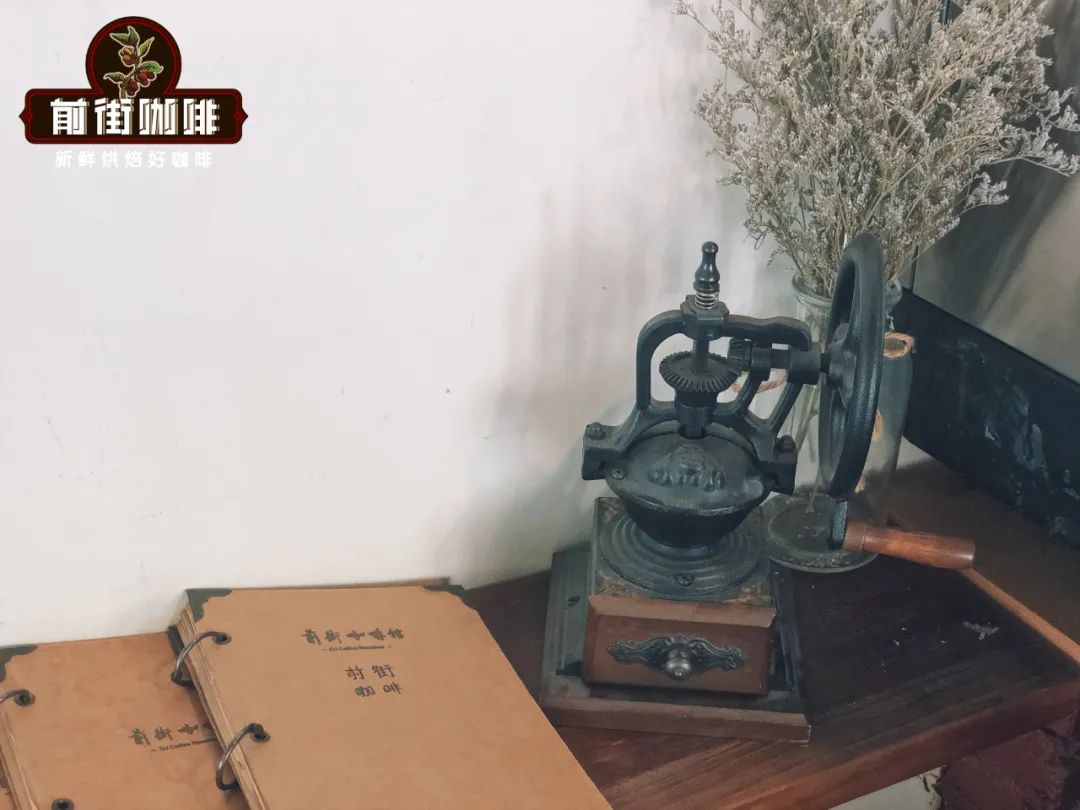
Guide reading
Many friends in the Italian style have a heart to pull beautiful flowers, and the premise to pull out a beautiful pattern is to make delicate and dense milk bubbles, of course, delicate and dense milk bubbles are not only for looking good, but also add a better taste to a cup of milk coffee. This issue of Qianjie Coffee will teach you how to get rid of milk bubbles!
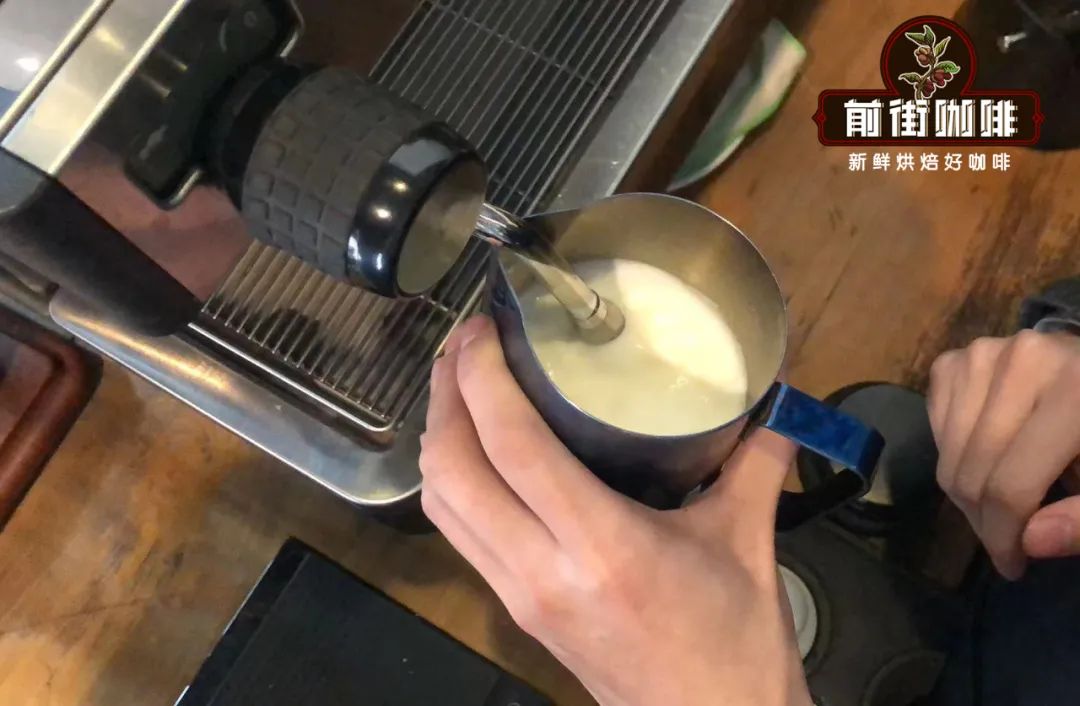
The way to get rid of the foam.
There are many ways of foaming milk, but it can be roughly divided into two categories: one is the combination of milk and milk foam. The other is to separate the stages of getting rid of and beating off, that is, to send the milk first and then beat the milk foam. This time, in order to better explain, we will share the separate forms of the stages of killing and sleeping together, so that we can better understand.
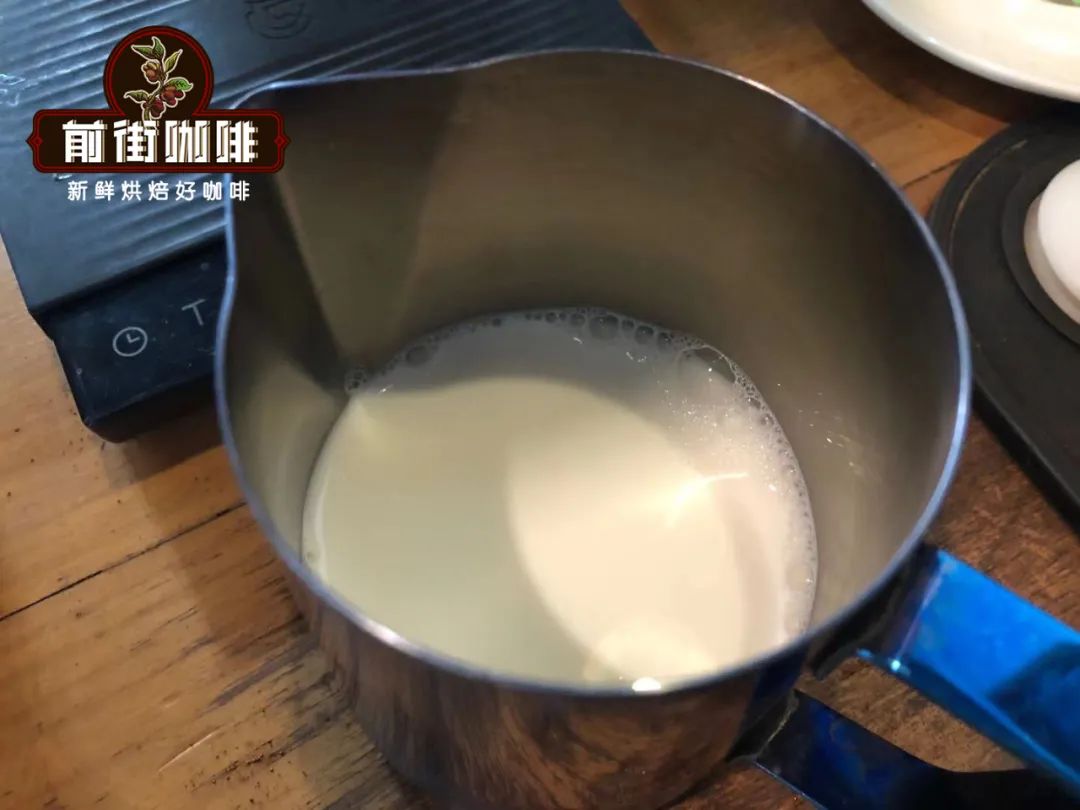
Get ready to get rid of the foam
First of all, we have a steam bar, the general semi-automatic coffee machine will be equipped with steam bar, followed by the need to hold milk containers, such as milk vat or flower jar (professional equipment will get twice the result with half the effort).
Finally, when it comes to the choice of milk, no matter normal or low temperature milk, whole milk or skim milk can get rid of foam, but if you want the milk to have better texture, taste, stability and durability, Qianjie still recommends using frozen whole milk.
The principle of getting rid of milk foam
Open the steam bar button, you will find that there are 4 air vents (different brand models will be different, there are single hole, 2 hole, 3 hole), if we are half buried in the milk surface, open the steam bar button, at this time to air to blow off the foam; if all buried in the milk, it will not dismiss the foam, but will only heat the milk through hot steam!
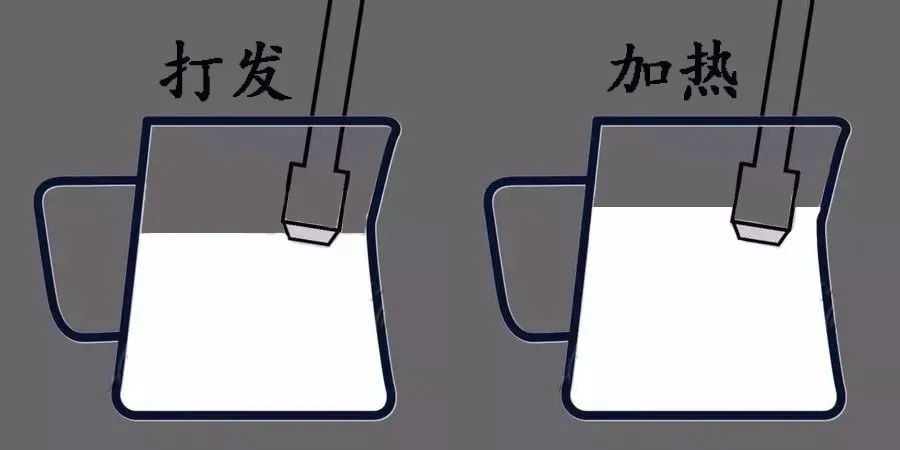
Demonstration of passing away milk foam
1. The best capacity of milk: a reasonable capacity is needed to dispense with milk. It is recommended to use 40-60% of the total capacity of the milk tank in front of the street. Too little milk and too much milk test the technology. Of course, in addition to this factor, it also depends on the amount of milk you actually use in a cup of coffee to avoid excessive waste. In the past, the capacity of the milk tank used in the street was 550ML, and the amount of milk injected was 250ML (just at the bottom of the nozzle).
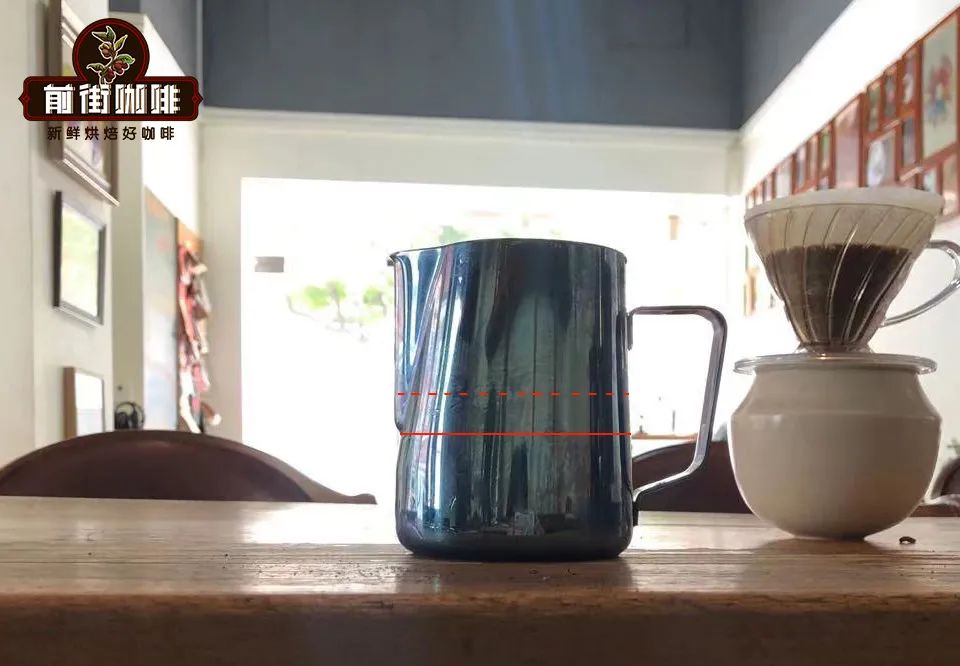
(the solid line is the amount of milk, and the dotted line is the capacity after discarding)
2. Dispatch position: before preparing to dismiss, turn on the steam bar switch and release the condensed water vapor (turn off the switch after release). Then pull out the steam rod at an angle of 45 degrees, using the cylinder nozzle to stabilize the position of the steam rod, the steam vortex is counterclockwise, the position of the steam rod is on the right side of the cross in the center of the liquid level, and the steam rod is semi-buried.
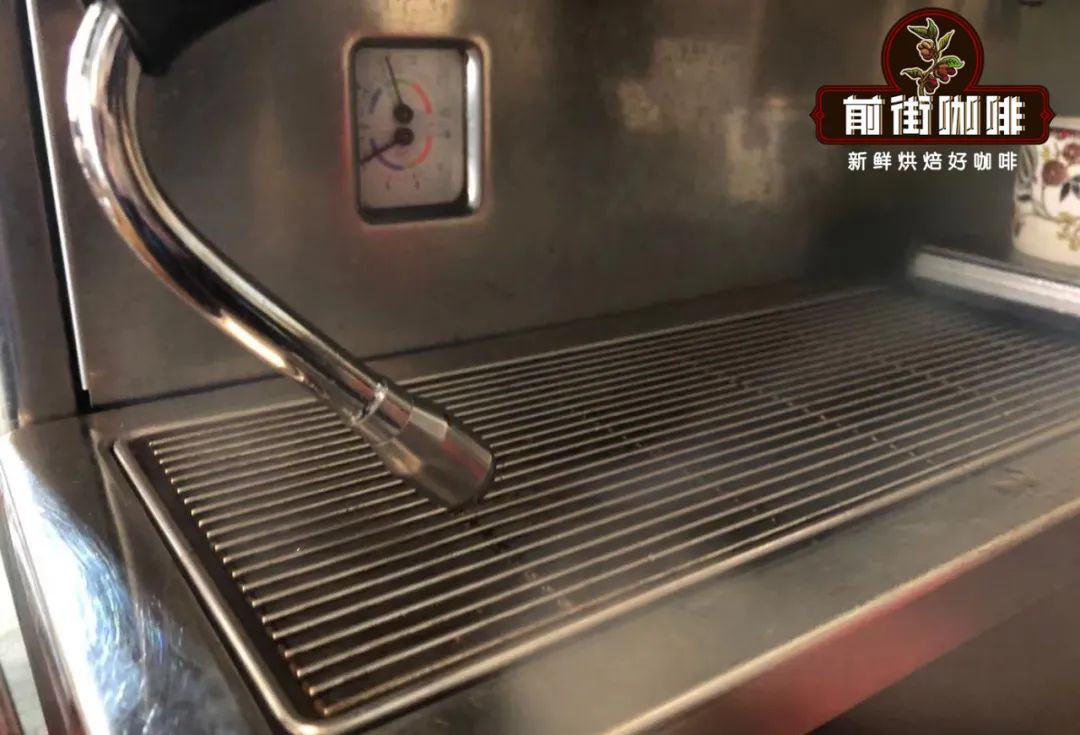
3, the killing stage: turn on the steam switch and you will hear the sound of "squeak-squeak". At this time, the time spent is different according to the thickness of the foam required (the longer the time is spent, the thicker the foam is). Usually beat 50% of the milk to 60% of the amount (latte foam thickness) to pass the time in about 3 seconds. The direction in which the milk turns uniformly forms a whirlpool.
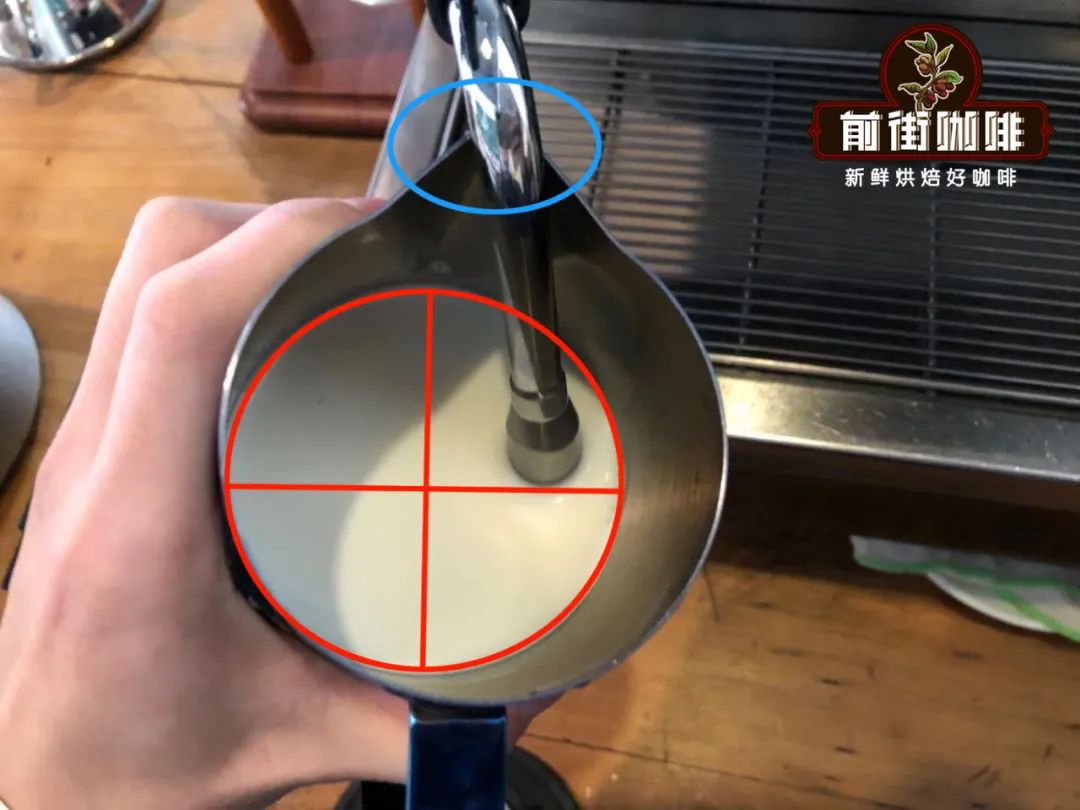
4. Beating stage: at this time, the steam hole needs to be fully buried, only heated and no longer sent. Do not bury the steam hole at the bottom, it is recommended to be in the milk foam layer, which is beneficial to make the rough foam delicate. When will it stop? It depends on your milk temperature, which is generally controlled between 55 and 65 ℃. Too high temperature can denature proteins (generally speaking, thermal denaturation of proteins in food occurs at about 60 ℃).
Delicate and dense milk foam, showing a solidified yoghurt when shaking, the surface is delicate in the shape of a reflective mirror, silky and slippery.
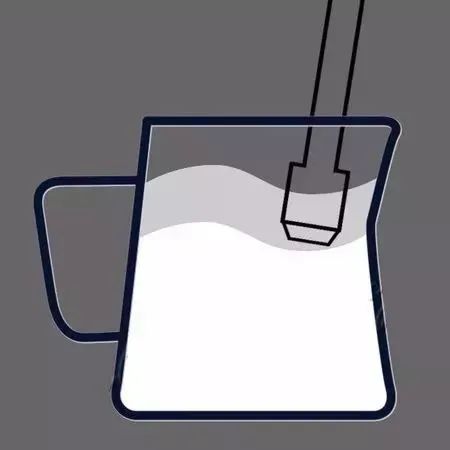
How many degrees is the right temperature for milk?
In order to explore the effect of temperature on coffee, Qianjie Coffee tried to use milk temperature as a variable to taste the taste of milk at different temperatures and the taste and taste of lattes made from milk at different temperatures. to observe the effect of milk at different temperatures on flower drawing.
Milk temperature
Milk taste and sweetness
Milk fluidity
The taste of latte
Group A
4 degrees Celsius (unsent)
Smooth and medium sweetness
Group B
39 degrees Celsius
Smooth and medium sweetness
Higher
The milk foam is slightly thinner, the sweetness of milk is obvious,
Group C
52 degrees Celsius
Slippery, moderately high sweetness
High
The thickness of milk foam is moderate, sweet and comfortable as a whole.
Group D
71 degrees Celsius
Dense, low sweetness
Low
The milk foam is too thick and the overall temperature is too high, hindering the mouth.
It can be seen from the results that the milk temperature in group C is the most suitable, with high sweetness and dense foam, and the temperature is not too high to cause hot mouth obstruction.
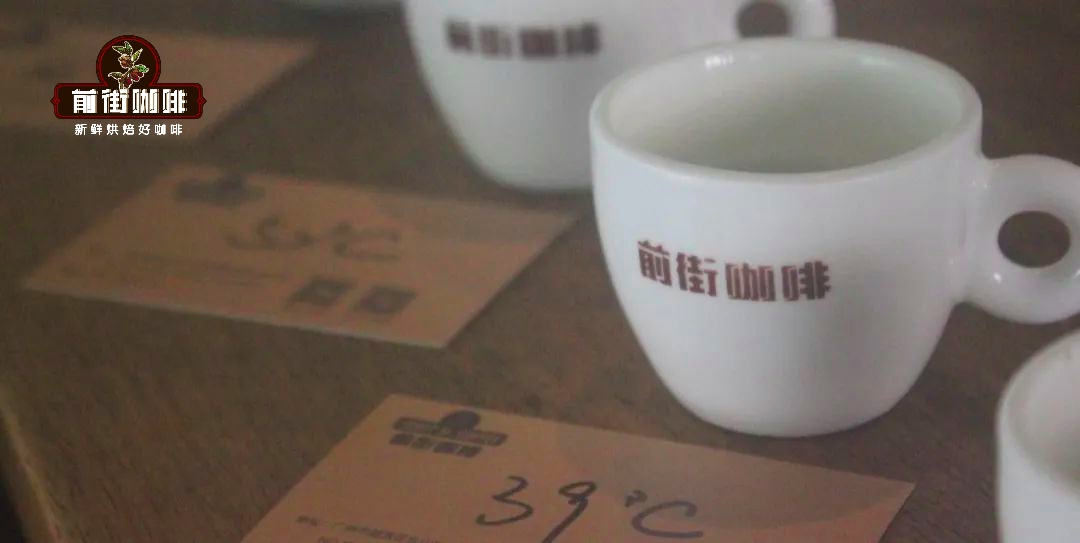
But why did it end up like this? We need to start with what milk contains.
Fat
Fat
Fat affects the thickness and quality of milk and the durability of milk bubbles. The more fat the milk is, the more mellow the milk is and the longer the foam is retained. Another effect of fat on milk bubbles is that the less fat, the more protein likes the air filled with milk, resulting in more milk bubbles.
Sugar
Sugar
The sugar in milk is lactose, which is the source of sweetness that we can sense directly, even without adding extra sugar. But as the temperature rises, our perception of sweetness becomes difficult to recognize. As we often say, "you can't eat hot tofu in a hurry", which also reflects the fact that food is in a state of high temperature. our senses are more difficult to taste.
Protein
Protein
When we beat the milk, as the temperature rises, the protein will slowly unravel and become hydrophilic at one end and hydrophobic at the other. When we put in the steam in the process, the hydrophobic end will avoid the water in the milk and fall into the bubble, causing the bubble to form a hydrophilic barrier, also known as "surfactant".
The quality of protein surfactant also determines the quality of milk bubbles. But once the temperature exceeds 70 degrees Celsius, the protein will denature or decompose, which can cause the bubbles held by the protein to burst, causing the foam to deteriorate.
Combined with the above, the recommended temperature of milk is between 50 degrees Celsius and 60 degrees Celsius. Proper heating can help us send out dense milk bubbles and more obvious sweetness. At the same time, we should also pay attention to the fact that the temperature should not be too high. Once the protein is heated above 70 degrees Celsius, it will denature or decompose, causing the foam to burst, and the high temperature will make the coffee difficult to enter.
For more boutique coffee beans, please add private Qianjie coffee on Wechat. WeChat account: kaixinguoguo0925
Important Notice :
前街咖啡 FrontStreet Coffee has moved to new addredd:
FrontStreet Coffee Address: 315,Donghua East Road,GuangZhou
Tel:020 38364473
- Prev
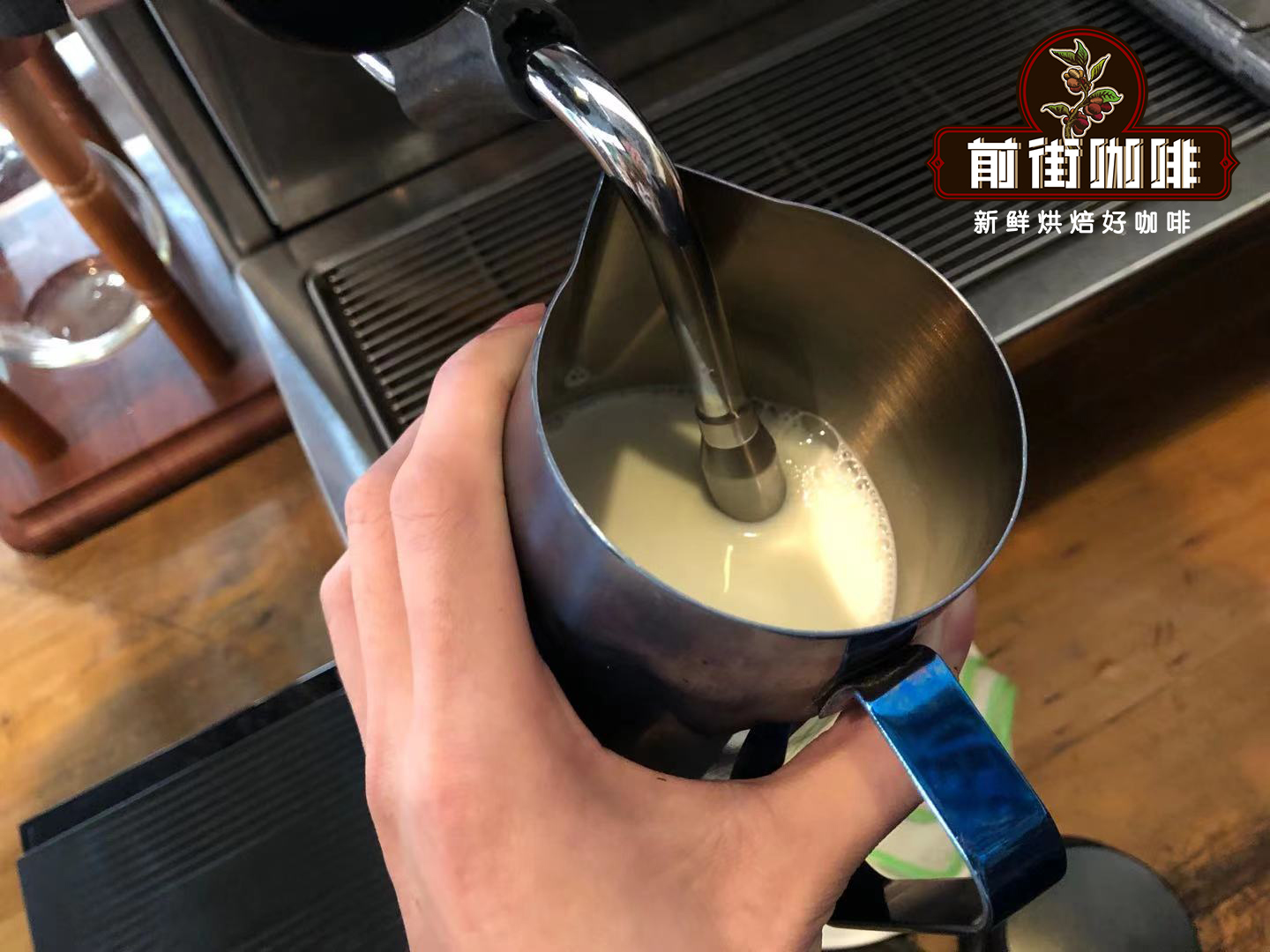
Matters needing attention how to make espresso in Italian coffee machine
Professional coffee knowledge exchange more coffee bean information Please follow the coffee workshop (Wechat official account cafe_style) foam beating skills using an Italian coffee machine although there are many ways, the method of beating milk with ESPRESSO is one of the most successful methods for beginners, that is, look at it first and then beat it. 1, the production of milk foam. The production step (1)
- Next

How to use Qianjie coffee earbag to easily make a cup of iced coffee! Skills of making iced coffee at home
Professional baristas Exchange Please follow the Coffee Workshop (official Wechat account cafe_style) many people like to drink hot coffee, just enjoy the entrance, hot and mellow flavor, but recently it is really hot, hot summer, just indoors also have the feeling of burning. At this time, a cup of cold iced coffee has become a happy taste of summer heat! Follow us.
Related
- What is the meaning of lactic acid fermentation with coffee bean treatment?
- How to judge the state of foam by sound?
- How does the latte pull out the unicorn pattern? Come to get for a little trick to improve the flower pull!
- Will flower pulling affect the taste of the latte?
- Do you know the history of coffee?
- The difference between honey treatment and sun washing what is raisin honey treatment?
- What kind of milk can a novice use to make coffee foam to keep the foam longer? The correct method and skills of milking tutorial sharing
- Why do washed coffee beans taste sour? Flavor characteristics of washed Coffee
- Introduction to the skill of how to practice the size and height of water injection around the circle of hand-brewed coffee
- How do beginners practice coffee flower drawing from scratch?

